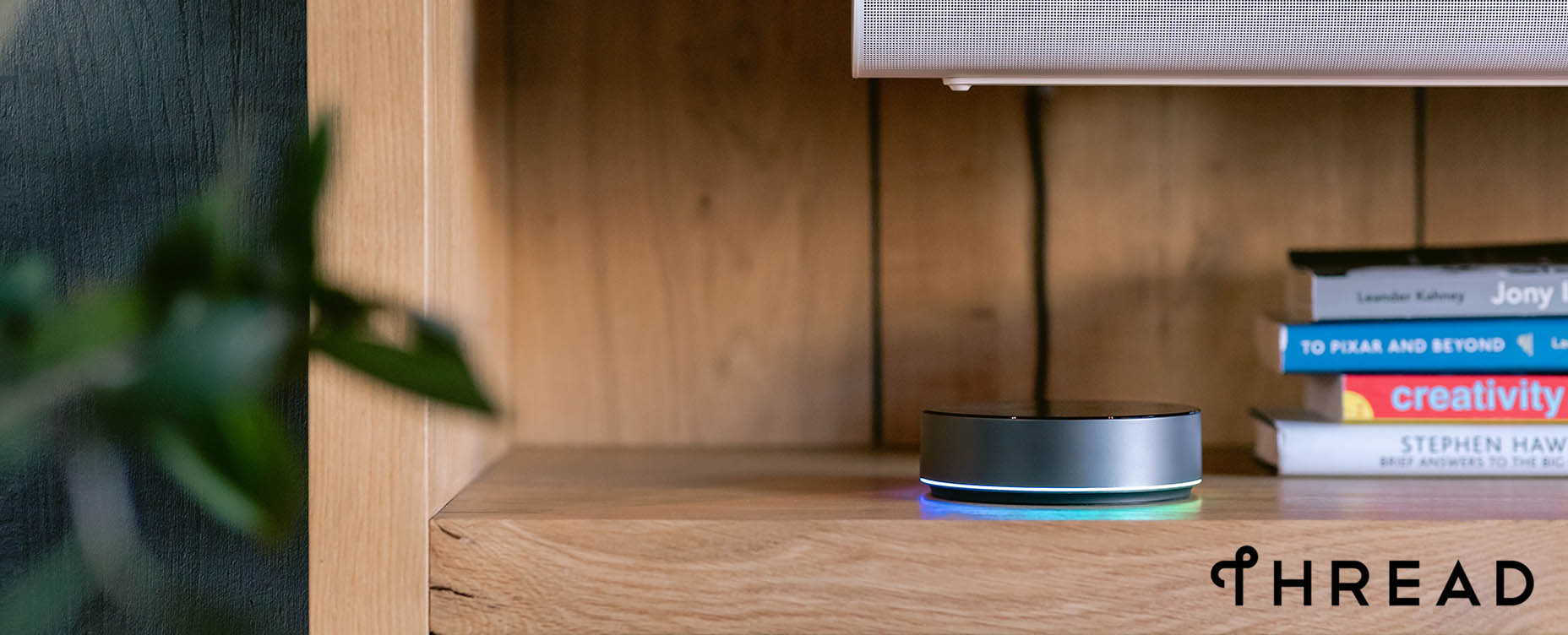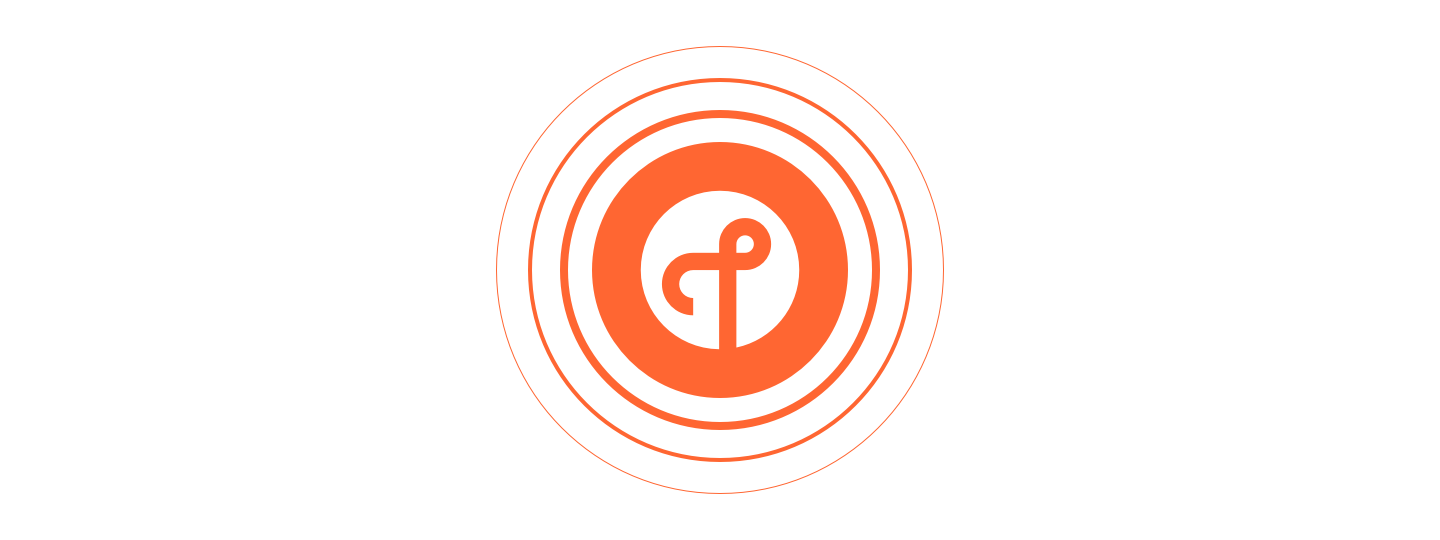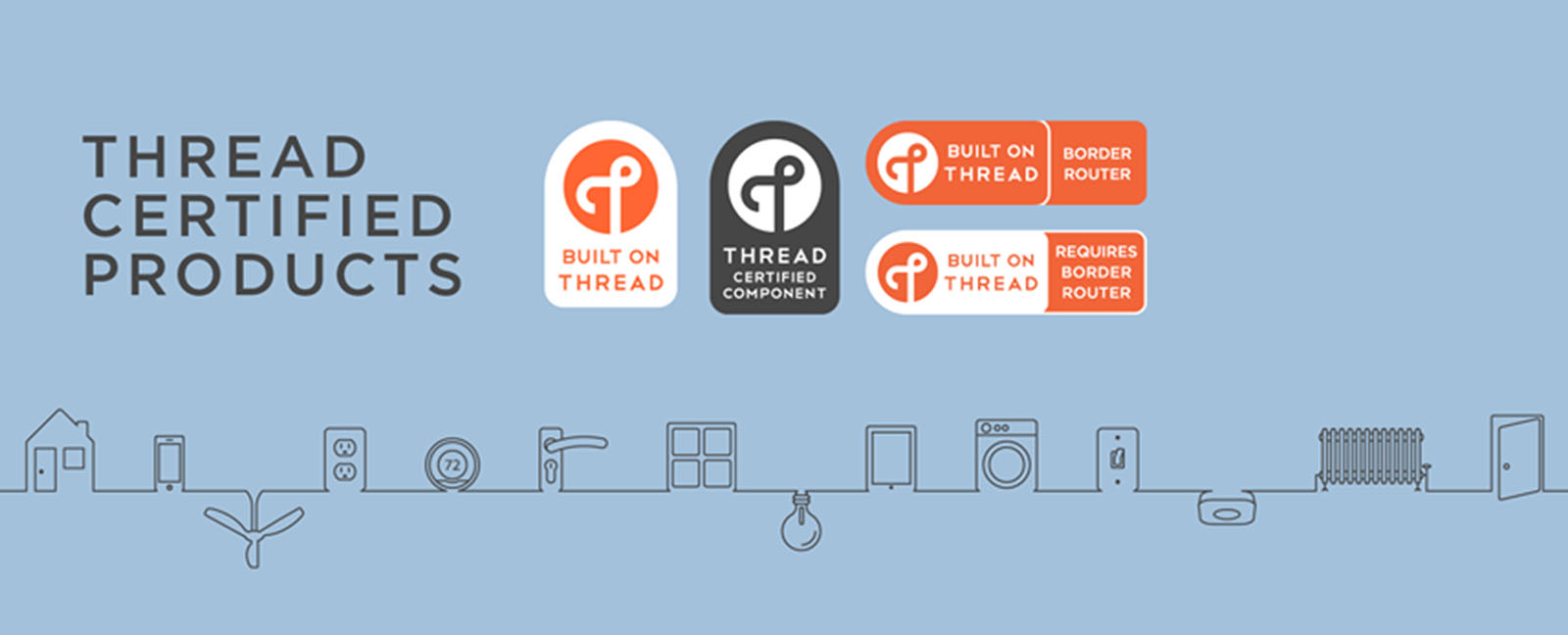
What is Thread?
With Matter gaining traction and becoming the go-to communication standard for connected devices, you keep hearing the word Thread in relation with Matter. It’s easy enough to deduct that it’s some sort of networking protocol, but what is it exactly? How is it different than other protocols? What are its benefits and what does Thread bring to the table other don’t? How does Thread correlate to Matter?
Thread at a Glance
- Mesh networking communication protocol
- Low power consumption
- Local connection with low latency
- Easy and streamlined onboarding process
- A strong emphasis on security
- Future-proof communication protocol
- Requires a Thread Border Router – like Homey Pro or Homey Pro mini
What is Thread?

Built on the same foundations as Zigbee, Thread is an IPv6-based, low-power wireless networking protocol specifically designed for IoT devices. It operates on IEEE 802.15.4 radio technology, providing a secure and scalable mesh network for smart home applications. Developed by the Thread Group, an alliance of industry leaders including Google, Apple, and Samsung, Thread aims to address the interoperability, security, and reliability challenges prevalent in traditional IoT protocols.
Thread is a mesh networking protocol
Just like Zigbee and Z-Wave, Thread utilizes a mesh networking topology, enabling devices to communicate directly with one another and relay messages, extending the network's coverage and improving reliability. This decentralized approach ensures redundancy and fault tolerance, enhancing the overall resilience of the IoT ecosystem.
In other words, instead of being reliant on a single controller, in a mesh topology, each device serves as a node, capable of sending, receiving, and forwarding data packets to neighboring devices.
Thread Device Types and Network Roles
The Thread specification outlines two primary types of Thread Devices: Full Thread Devices (FTD) and Minimal Thread Devices (MTD), each serving specific functions within the network topology. For a Thread network to function, it must have at least one Border Router like Homey Pro or Homey Pro mini, which is an FTD device serving as a gateway between Thread devices and external IPv6 networks (Wi-Fi, Ethernet), also enabling internet connectivity.

A Thread Router handles routing services within the network and manages device security and commissioning. Unlike other devices, routers are always active and cannot enter sleep mode. One router also assumes the role of Leader, responsible for crucial decisions like authorizing devices to upgrade to routers. If the Leader fails, another router is dynamically elected to take over the role, ensuring seamless network operation.
Full Thread Devices (FTDs) and Minimal Thread Devices (MTDs) are further classified as:
- Full Thread Devices (FTD):
- Router-eligible End Device (REED): REEDs possess routing capabilities but may not act as routers due to current network conditions and setup. The network automatically promotes REEDs' to routers through the Leader if needed, requiring no user intervention.
- Full End Device (FED): FEDs are devices similar to REEDs, however they do not have the capability to become a Router or Leader.
- Minimal Thread Devices (MTD):
- Minimal End Device (MED): MEDs communicate solely through their parent router and cannot relay messages for other devices. A MED has its radio turned on, even when idle.
- Sleepy End Device (SED): SEDs rely on their parent router for communication but conserve energy by turning off their radio when idle, waking periodically to communicate.
- Synchronized Sleep End Devices (SSED): SSEDs also rely on their parent router for communication and conserve energy by turning off their radio when idle, waking on a schedule to communicate instead of periodically.
- Bluetooth End Device (BED): BEDs communicate exclusively through a Bluetooth LE Bridge Router, distinct from other Thread Devices. They use Bluetooth Low Energy instead of IEEE 802.15.4 for communication.
If the Thread specification feels a bit too technical and overwhelming, that’s because it is. The good news is you, as a user, do not need to be concerned about any of these roles in a Thread network. All you need to do is deploy your Homey Pro or Homey Pro mini and start adding Thread devices, the network will handle all operation and setup logic automatically.

Differentiating between Matter and Thread
Before Thread can be discussed in a smart home sense, it’s important to differentiate between Matter and Thread:
- Matter standardizes the application layer protocol for smart home devices from different manufacturers, ensuring interoperability across ecosystems. This includes regulating the Bluetooth device onboarding process, data exchange, security norms and defining device capabilities.
- Thread, on the other hand, is one of the three networking protocols (Wi-Fi, Ethernet, Thread) enabling communication between Matter-enabled devices. It operates at the network layer, forming the underlying infrastructure for seamless communication between devices.
Let’s explain with an analogy in plain English.
Imagine you're planning a big party. Matter would be like the party planner who makes sure everything runs smoothly and everyone has a good time. They decide on the theme, set the party rules, organize the activities, and ensure that guests from different backgrounds can mingle and enjoy themselves. Matter is like that one friend who effortlessly introduces people, sparks conversations, and keeps the party vibe alive.
Now, imagine Thread as the network of pathways and corridors that link different areas of your party venue. Just like how pathways enable guests to move from one room to another without getting lost or delayed, Thread provides a reliable network for devices to communicate with each other. It's like having a well-planned layout that ensures guests can navigate the party easily and reach their destinations. With Thread, your party runs smoothly because you’ve created a seamless experience for everyone involved.
So, while Matter sets the stage and rules for the party, Thread provides the venue layout so guests can freely connect with each other. Wi-Fi and Ethernet are also at the party, doing the same thing for guests they are familiar with, while also following Matter’s rules and standards.
Benefits of Thread
As a mesh networking protocol designed specifically for smart devices, Thread brings certain benefits and advantages to the table:
- Low Power Consumption: Thread devices are engineered for energy efficiency, prolonging battery life of end-devices and reducing electricity usage of wired devices.
- Low Latency Communication: Thread's efficient routing algorithms and low-power radio technology minimize latency and delays, enabling responsive device control.
- Local Connection: While a border router bridges the gap between the Thread network and the internet, all Thread devices communicate locally with each other, resulting in a fast and reliable connection.
- Resilient and Reliable: With its self-healing mesh network architecture, Thread ensures reliable communication even in dynamic environments with potential interference or device failures. For example, if one of your router devices goes offline, the adjacent device that was relying on it for connectivity will re-path and form the next best connection.
- Security: Thread incorporates robust security mechanisms, including encryption and authentication, to safeguard data transmission and protect against malicious attacks.
- Scalability: Thread networks can scale from a few devices to hundreds or even thousands, accommodating the growing demands of IoT applications.
What about Zigbee and Z-Wave?
You might be wondering, where do Zigbee or Z-Wave fit into all of this? How do they compare to Thread? After all, some of the advantages Thread boasts about are also present in these two communication protocols. Let’s take it one step at a time.
While both Zigbee and Z-Wave are protocols optimized for battery-powered end devices, Thread has the upper hand by utilizing something called Constrained Application Protocol (CoAP), making it possible for very small messages to be sent by sleepy end devices. This method saves a significant amount of power, prolonging the life of battery-powered smart devices in your home.
Going further, while all 3 are self-healing protocols by design, Zigbee and Z-Wave only have the ability to form paths at the router level. In simpler words, a single device can form a better path to the coordinator when its parent router fails. However, if the main coordinator fails in a Zigbee network, the whole network comes crashing down.
This is where Thread shines. If one border router fails, another border router on the network is automatically elected to replace it, if there are multiple available. This ensures your network is always online and functional, no matter the state of your current leader. Thread networks have no single point of failure by design.
Since Thread is part of the Matter specification, it brings along the promise of interoperability across different ecosystems and manufacturers. You will not have to worry whether device A will work with border router B, it just will.
Thread emphasizes security by default, with features such as network-wide encryption, secure commissioning, and mandatory support for certain security protocols. While Z-Wave does follow similar practices when implementing security, Zigbee’s features are optional and may vary depending on the Zigbee application profile being used.
And lastly, it’s important to consider the future of Zigbee and Z-Wave, especially if you are just starting out with a smart home. While they are nowhere near their end of life, neither is included in the Matter specification. To future-proof your smart home, it’s best to invest in Thread-powered smart devices.
Homey Pro and Thread
It’s hopefully clear by now that before you can form a Thread network, you need to have a Thread Border Router deployed in your smart home. Homey Pro is the worlds most advanced smart home hub that supports Matter-over-Thread devices, so any product with the Matter logo will work with your Homey Pro out of the box.
To add a Thread device to Homey Pro, users can choose to onboard it using either their Android/iOS device or directly through Homey phone or web app. The second method is recommended and easier, relying on Homey Pro’s Bluetooth radio to connect to your Thread device. Read more about the onboarding process here.
While Thread is considered the top mesh networking protocol at the moment, there is no real reason all your devices need to use only a single communication protocol. Besides Matter and Thread, Homey Pro supports Zigbee, Z-Wave, Wi-Fi, Bluetooth, Infrared and 433 MHz, offering the complete smart home controller package.
Summary
In summary, Thread is a mesh networking protocol that provides a strong, scalable, and secure system for connecting devices and sharing data. With its efficient power usage, self-healing network and resilience, Thread overcomes common challenges present in older connectivity protocols, making it easier for smart homes to adopt interconnected devices.
Creating a Thread network with Homey Pro gives you the best of both worlds. You future-proof your smart home with Matter while also retaining support for other connectivity protocols like Zigbee and Z-Wave.